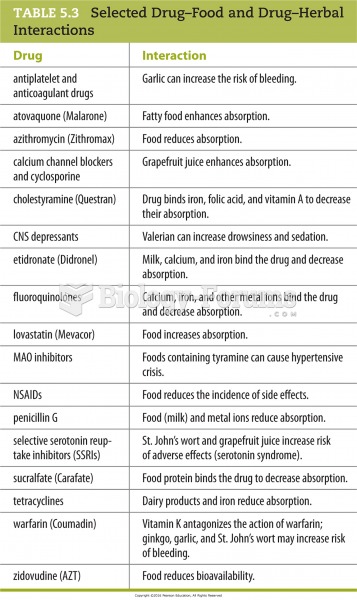Answer to Question 1
Correct Answer: 1,5
Rationale 1: Nurses should not use a good food, bad food approach, but rather should realize that variations of intake are acceptable under different circumstances. The only universally accepted guidelines are to eat a wide variety of foods to furnish adequate nutrients.
Rationale 2: The nurse should not support the client's belief about foods being either good or bad.
Rationale 3: The nurse should not support the client's belief about foods being either good or bad.
Rationale 4: This might not be enough to sustain the client's calorie needs.
Rationale 5: Nurses should not use a good food, bad food approach, but rather should realize that variations of intake are acceptable under different circumstances. The only universally accepted guidelines are to eat moderately to maintain correct body weight.
Answer to Question 2
Correct Answer: 3
Rationale 1: Certain lifestyles are linked to food-related behaviors. People who are always in a hurry probably buy convenience grocery items or eat restaurant meals. People who spend many hours at home might take time to prepare more meals from scratch.
Rationale 2: Ethnicity often determines food preferences. Traditional foods are eaten long after other customs are abandoned.
Rationale 3: Beliefs about effects of foods on health and well-being can affect food choices. Many people acquire their beliefs about food from television, magazines, and other media. Food fads that involve nontraditional food practices are relatively common.
Rationale 4: Religious practice also affects diet. In some religions, meat is avoided on certain days. In some faiths, meat, tea, coffee, and/or alcohol are prohibited.







